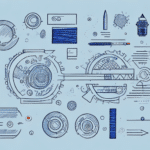How Kitting Operations Can Enhance Inventory Cost Efficiency
The concept of kitting operations has gained significant traction in the realm of inventory management over the past year. By systematically grouping related items into kits, businesses can streamline their operations, enhance efficiency, and achieve substantial cost savings. This article delves into the various ways kitting operations can assist businesses in optimizing inventory management and reducing associated costs.
The Role of Kitting in Inventory Management
Kitting is a process where individual items are assembled into a single kit or package based on their functionality or intended use. This approach is beneficial across various industries, including manufacturing, assembly, retail, and e-commerce. By creating kits, businesses can:
- Reduce the time and effort required to pick, pack, and ship individual items.
- Streamline warehouse operations, leading to improved overall efficiency.
Furthermore, kitting enables businesses to manage their inventory more effectively by:
- Enhancing stock level tracking to ensure sufficient quantities for order fulfillment.
- Preventing stockouts and backorders, which can be costly and harm a company's reputation.
- Identifying popular and less-demanded items to adjust inventory levels accordingly.
According to a report by Inc., businesses implementing kitting operations have observed a 20% reduction in inventory holding costs and a 15% increase in order processing speed.
Understanding the Benefits of Kitting Operations for Inventory Control
One of the primary advantages of kitting operations is enhanced inventory control. By assembling pre-packaged kits, businesses can ensure they have the optimal combination of items to meet customer demand, thereby:
- Reducing the risk of both stockouts and overstocking.
- Improving inventory accuracy through better tracking of kit usage.
- Identifying opportunities to minimize waste and optimize inventory levels.
Additionally, kitting streamlines the order fulfillment process by having ready-to-ship kits, which:
- Reduces the time taken to pick and pack orders.
- Enhances order accuracy, minimizing errors that can lead to returns and customer dissatisfaction.
Overall, kitting operations contribute to increased operational efficiency, allowing businesses to focus on growth areas such as marketing and sales, ultimately boosting revenue and profitability.
How Kitting Can Streamline Your Warehouse Operations
Kitting plays a crucial role in optimizing warehouse operations by:
- Grouping related items into kits, thereby reducing the time and effort needed for picking, packing, and shipping.
- Improving order accuracy and minimizing picking errors.
- Optimizing storage space by consolidating items, which frees up space for other inventory and enhances overall warehouse organization.
Moreover, kitting helps prevent inventory obsolescence by aligning kit assembly with actual demand, ensuring that items do not become outdated or excess stock is avoided.
Customers benefit from kitting as well, receiving comprehensive kits that save them time and effort, fostering customer loyalty and encouraging repeat business. This unique value proposition also differentiates businesses from competitors in the marketplace.
Top Strategies for Establishing Successful Kitting Operations
Implementing effective kitting operations requires strategic planning and execution. Key strategies include:
- Clear Processes and Procedures: Develop standardized methods for creating and managing kits.
- Employee Training: Educate staff on proper kitting techniques to ensure consistency and efficiency.
- Investment in Tools and Technology: Utilize appropriate software and automation tools to support kitting activities.
- Packaging and Labeling: Ensure kits are appropriately packaged and labeled for easy identification and handling.
Regularly reviewing and optimizing the kitting process is also essential. This involves:
- Analyzing data on kit usage and customer demand to ensure kits are relevant and efficiently assembled.
- Gathering feedback from employees and customers to identify areas for improvement.
- Implementing changes to streamline operations and enhance effectiveness.
Key Factors to Consider When Implementing a Kitting System
When deploying a kitting system, businesses should evaluate several critical factors, including:
- Product Types: Assess the categories of products being kitted and their compatibility within kits.
- Intended Use: Define the purpose of each kit to ensure it meets customer needs.
- Demand Forecasting: Estimate the expected demand for each kit to manage inventory levels effectively.
- Resource Allocation: Determine the necessary resources, including manpower and technology, to manage the kitting process.
Customization levels are also crucial. Businesses must decide whether they need highly customized kits or standardized kits with basic components, as this decision impacts the complexity and resources required for kitting.
Lastly, it's important to weigh the potential benefits of kitting, such as increased efficiency, reduced waste, and improved inventory management, to justify the investment and gain a competitive edge in the market.
How to Optimize Your Inventory Costs with Kitting Techniques
Employing kitting techniques can significantly optimize inventory costs by:
- Reducing the number of individual items that need to be stocked, thereby lowering storage and carrying costs.
- Enhancing inventory accuracy to minimize the risk of overstocking and reduce the costs associated with excess inventory.
- Optimizing labor costs by decreasing the time and effort required for picking, packing, and shipping individual items.
Additionally, kitting can improve order fulfillment times by pre-assembling kits of commonly ordered items, leading to faster processing and increased customer satisfaction. This efficiency can also reduce shipping errors, as kits are pre-checked for accuracy before dispatching.
According to Investopedia, businesses that implement kitting techniques can see up to a 30% improvement in order accuracy and a 25% reduction in fulfillment times.
The Impact of Kitting on Supply Chain Efficiency and Cost Reduction
Kitting operations significantly enhance supply chain efficiency and contribute to cost reduction by:
- Streamlining warehouse operations, leading to faster order fulfillment and reduced labor costs.
- Optimizing supply chain visibility, which minimizes errors and delays.
- Supporting sustainable practices by reducing packaging materials and minimizing environmental impact.
Furthermore, kitting aids in the efficient use of transportation resources by consolidating items, thereby lowering transportation costs and enhancing overall supply chain efficiency.
In industries characterized by high customization or variability, kitting pre-assembled kits can simplify the fulfillment process, improve shipment accuracy, and reduce the likelihood of returns or exchanges.
Common Mistakes to Avoid When Setting Up a Kitting Process
When establishing a kitting process, businesses should be mindful of common pitfalls, such as:
- Inadequate Investment in Tools and Technology: Failing to invest in the right tools can hinder the efficiency of kitting operations.
- Poor Planning and Organization: Lack of clear planning can lead to inconsistencies and operational delays.
- Insufficient Employee Training: Without proper training, employees may struggle to implement kitting techniques effectively.
- Neglecting Inventory Tracking: Inadequate tracking can result in inventory discrepancies and inefficiencies.
Addressing these issues proactively is essential for the successful implementation of a kitting system.
Comparing Kitting vs. Traditional Inventory Management Methods
Compared to traditional inventory management, which often involves stocking large quantities of individual items, kitting offers several advantages:
- Reduced Storage Costs: Kitting decreases the number of individual items that need to be stored, lowering storage and carrying costs.
- Enhanced Efficiency: Grouping related items into kits simplifies inventory management and enhances operational efficiency.
- Improved Inventory Accuracy: Kitting enables better tracking and management of inventory levels.
Traditional methods may require more time and resources for inventory tracking and management, whereas kitting streamlines these processes, leading to cost savings and improved operational performance.
Tips for Choosing the Right Kitting Software for Your Business Needs
Selecting the appropriate kitting software is crucial for the success of kitting operations. When evaluating options, businesses should consider:
- Ease of Use: The software should be user-friendly and intuitive for seamless integration into existing workflows.
- Flexibility and Scalability: It should accommodate business growth and adapt to changing needs.
- Integration Capabilities: Ensure compatibility with existing systems such as inventory management, ERP, and CRM platforms.
- Key Features: Look for essential features like barcoding, labeling, real-time tracking, and reporting.
- Support and Training: Opt for software providers that offer robust customer support and training resources.
- Total Cost of Ownership: Consider licensing fees, support costs, and any additional hardware or software requirements.
According to a study by Software Advice, businesses that thoroughly evaluate these factors are more likely to select a kitting software that aligns with their operational needs and supports long-term success.
The Future of Inventory Management: Leveraging the Power of Kitting Operations
As businesses continue to seek innovative ways to enhance operations and reduce costs, kitting operations are poised to become a pivotal tool in inventory management. Future trends in kitting include:
- Automation: Integration of automated systems and robotics to further streamline the kitting process.
- Internet of Things (IoT): Utilizing IoT devices for real-time inventory tracking and management.
- Data Analytics: Leveraging big data to optimize kit composition and predict demand more accurately.
These advancements will enhance the capabilities of kitting operations, making them even more integral to efficient and cost-effective inventory management.
Case Studies: Real-Life Examples of Businesses That Improved Their Inventory Costs with Kitting
Several businesses have successfully implemented kitting operations to enhance their inventory management and reduce costs:
- Packaging Manufacturer: Reduced inventory levels from 12 weeks to just three weeks by adopting a kitting system, resulting in significant cost savings and improved inventory turnover.
- E-Commerce Retailer: Decreased order fulfillment time by over 50% through the use of kitting techniques, leading to faster delivery times and increased customer satisfaction.
These case studies underscore the tangible benefits of kitting operations in real-world business scenarios, highlighting their effectiveness in improving inventory management and reducing operational costs.




















